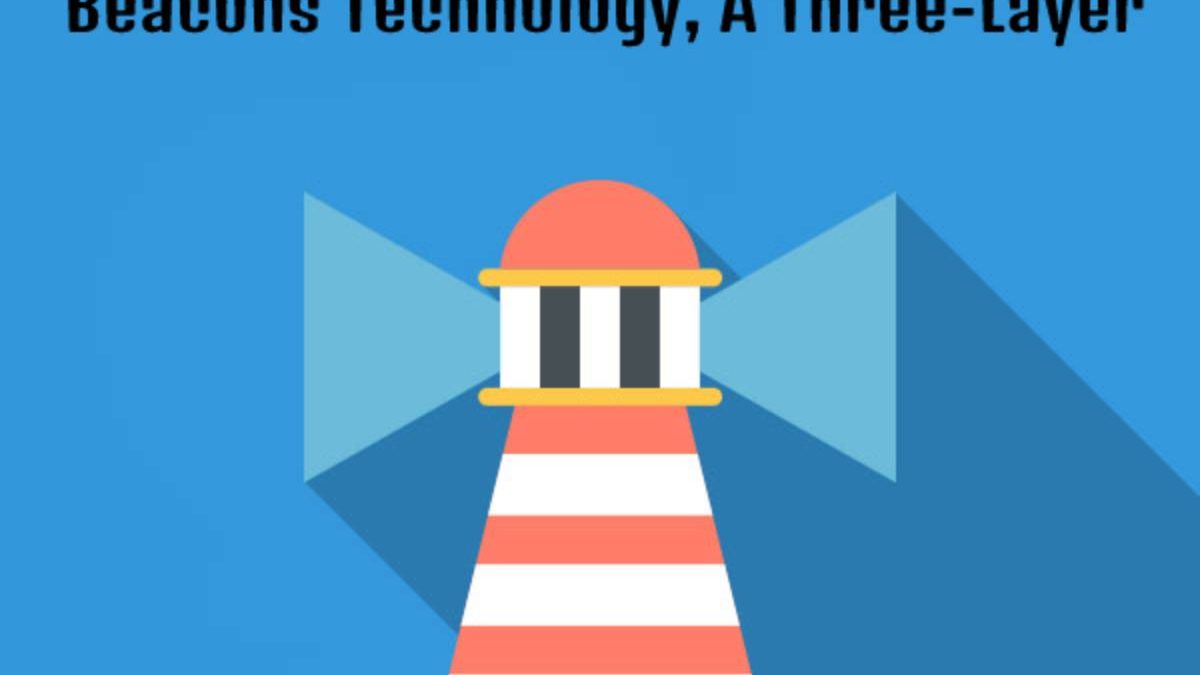Technology: Systems Beacon is a resource with a bright future ahead of the customer. But this innovation is not free, it is an economic investment.
According to the Location Based Marketing Association (LBMA), location-based marketing will represent a $ 43.3 trillion market by 2019. Don’t be fooled by these numbers, they are an aggregate measure that includes a large marketing ecosystem. And this tag system-based business opportunity will be part of that juicy pie.
Location-based marketing is a career for the sole purpose of increasing revenue. We need to provide retailers with solutions to help them do that. And the tool the system called THREE-LAYER CAKE.
It is important to know that location-based marketing actually treats location as a set of data. And for this, it uses various technologies, devices, and supports.
We all want to get to that top, juiciest layer on the cake, the one that ultimately leads to transactions and revenue, but we can only get there by targeting the right customers in the store through an engaging and rewarding experience. You can also solve the error code using following link Method to fix [pii_email_084f9855cdf0a9c97204] error.
Table of Contents
First Layer
It’s about generating location-based traffic. And, ultimately, it is about attracting customers to the store through a variety of technologies: geo-fences, push messages, social networks, etc.
Since geofences and social locations are the newest and most untapped part of the new marketing – it’s actually a service that delivers location-based content, and these messages are promotions for a user’s device upon entering an area. geographic. When the terminal enters a geofence zone, they will potentially receive specific warnings both on the web and in their terminal applications.
Therefore, placing a beacon or beacon in a store by itself is of no use if you subsequently have no one to interact with commercially.
Second Cover
Process location-based traffic that converted into business action. In other words, once the traffic is in the zone of influence of the beacon, we will have to focus the customer’s attention.
This second layer is related to engagement: increasing the time spent. In the shopping cart and especially in the customer experience. This layer is where technologies like Wi-Fi and beacons come into play.
Tags will be the point where you connect the offline experience with the online experience. For example, a customer comes to pick up a product, looks at it, but does not buy it. The store can then email the customer about their shopping trip and remind them of the items they are interested in. Tags also “listen” to customer behavior, in the same way, that search engines are used to track browsing history and provide personalized advertising to the user. Beacons in retailers give us the ability to collect data, data that is now being lost, data that we can process. By engaging customers in this type of digital store, we can use this behavioral data to drive them to online shopping, where more buyers and more money are flowing today. And Also You Can Watch Movies on 123movies 2021 .
In fact, what we are trying to do is deliver a message in real-time, depending on the context in which the customer is. It is achieved by the data that is in the single platform where we work with both of the customers that is in online store and physical store.
Beacons offers new avenue that will connect them with their customers, provide a personal shopping experience. With this technology, the client gains in value. And our employees will be able to offer them a better level of service.
Now you will understand why all the big stores make applications for cell phones. They don’t care if you never open them, they just have to have them installed on your terminal.
Third Layer
This is what we all hope, that geolocated traffic turns into transactions.
Regardless of the payment system, be it legal tender, bank card, or digital currency, it is still based on a decades-old concept: entering the business and going through registration to pay for the payment product they purchased. Perhaps the biggest disruption is the fact that consumers have literally become “points of sale.” They control where to buy, how to pay, how they pay, and where they get their purchases. So why do stores still need cash registers? This third layer focuses on turning the great customer experience you’ve created into transactions and revenue. Here, payment technologies like Apple, NFC, RFID, and loyalty platforms are the key to winning the proximity-based transaction war.
Usually, the solutions that are generally given are approaching. To a beacon system where a beacon notifies a mobile application to send an offer. Without integrating the data obtained from the transaction operations. A good technology partner, such as EXTRA Software. Will create a series of mechanisms to build customer loyalty, even beyond the final transaction.
You Already Have The Cake, Now You Must Eat It
Beacon technology is about integration between people, places, and media.
By adopting this technology, retailers first go through the localization phase before expanding their system to all three layers. The advantage of this strategy is that we can implement it step by step and thus minimize investment risks. If we find that during the first phase, the implementation of the first layer. Our beacon cannot lead customers to our business, why are we going to continue the investment?
As beacon-based marketing begins to take hold. Few retailers have an enterprise architecture with all three layers in place, let alone those that have them cohesive. The usual thing these days is the implantation of the first layer.

